In one of the most daring art heists in Australian history, a thief or thieves took a world-famous Picasso from the walls of the NGV. The case has never been cracked. Can we get to the bottom of one of Australia’s greatest mysteries?
The heist
Picasso’s Weeping Woman was mounted on the wall of the National Gallery of Victoria when its doors closed at 5pm on Saturday, August 2, 1986. When the doors opened again the next morning, it was gone.
The thieves left a calling card in its place. It looked like the regular “location cards” used by the gallery, so, at first, staff thought the painting had simply been moved. The theft went unnoticed until the press received a tip-off on Monday, August 4.
“My jaw dropped,” says Race Mathews. At the time of the theft, Mathews was both minister for the arts and police in Victoria.
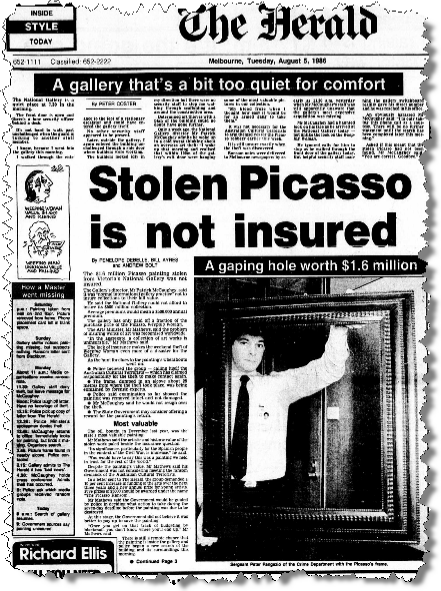
The tip-off came in the form of a ransom letter, addressed to Mathews — unkindly titled “Rank Mathews” — from a group calling itself the “Australian Cultural Terrorists” (ACT).
The letter stated, “We have stolen the Picasso from the National Gallery as a protest against the niggardly funding of the fine arts in this hick State and against the clumsy, unimaginative stupidity of the administration and distribution of that funding.”
The letter requested an increase in arts funding by 10%, a review of spending priorities and an annual prize for painting open to artists under 30 years, to be called “The Picasso Ransom”. If the demands were not met, the ACT threatened they would destroy the painting.
Mathews says at first authorities were worried it might have been stolen by international art thieves, and there was concern that it would be smuggled out of the country. A call for information from the public went nowhere. “We didn’t get information — what we got were the [ransom] letters.”
Mathews was perplexed about the demands of the letter, as he said the mid-‘80s were good years for the arts. He says it had the feeling of a student prank, “yet it was hard to believe anybody but a professional had got it out of that building”. The special screwdriver used to remove the painting from the NGV walls was not publicly available.
“The initial decision was that both possibilities would have to be followed up … that it had been stolen by professional art thieves and the possibility that the substance of the letters was genuine.”
“It was a headache, and still is a headache because it is sitting in the cold case file. I can’t imagine it is a long way up the police priority list these days,” he laughs.
A week later, a second ransom letter arrived containing a threatening burnt match. “Once the letters began to be taken seriously there was a real concern that the perpetrators, for lack of a better term, might panic and destroy it,” Mathews says.
The letters also unkindly described Mathews as a “pompous fathead” and a “tiresome old bag of swamp gas”.
“I was a bit surprised by the flavour of the letters,” Matthews says. “I don’t think that anything in my past or time in the portfolio would quite have justified the hostility ‘the old swamp gas’ bit,” he chuckles.
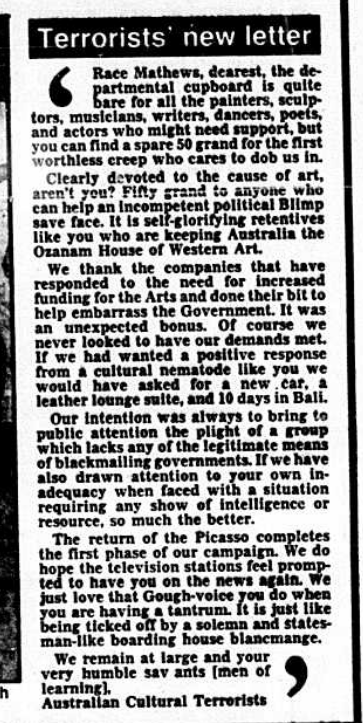
Then, just over a fortnight after the theft, the painting turned up in locker No. 227 at Melbourne’s Spencer Street Station on Tuesday, August 19, 1986.
I asked Mathews what his message to the thieves would be, was it time for them to come clean and fess up? A mischievous smile broke across his face “I can’t safely say all is forgiven,” he says.
The Herald journo
I meet Ashley Crawford for a beer at Tokyo Tina, a Japanese restaurant on Chapel Street. He’s a freelance journo who writes regularly on the arts in major publications. Nearly everyone I’ve spoken to had mentioned his name. And it turns out he’s solved the mystery.
After the theft, Jason Romney, then-arts editor of The Herald, approached Crawford to write about the crime. “So we got onto it, and I had a few leads, and essentially we did conclude that we did kind of know who had taken it,” Crawford tells me.
“Who was that?” I ask casually. Crawford’s look says nice try. “He is a really lovely guy, top-notch guy, he would immediately lose his job and there are still criminal proceedings out.”
Crawford told me the thief hadn’t planned on spending the night in the gallery after the theft, but the door back to the Victorian College of the Arts (VCA) School of Art was locked.
This lovely guy … “who is currently involved in the arts?” I probe. “Sector,” Crawford offers. “I don’t know how much I can tell without giving it all away.” Which he will not do.
“What should we call this guy, what pseudonym?” I ask. “Deep Throat?” he offers. “How about his initials?” I reply. Crawford isn’t giving up the goods, but he says the painting was always in good hands. “He knew how to handle art, so there was never any chance of it being damaged.”
“The cops did think it was the Roar guys at one stage,” Crawford tells me (Roar studios was an artist-run studio and gallery space in Brunswick Street, in the inner-Melbourne suburb of Fitzroy, in the 1980s). “We got two front pages out of the story, and that led us to be questioned by the cops, so we were obviously onto something.” They wanted to know where the information had come from. Eric Beecher, then The Herald’s editor and now Crikey’s owner, “triple checked” the facts and rallied the lawyers. “By that stage we had made a little pact. We even told Eric we knew a little bit more, but we weren’t willing to disclose it.”
At this point Crawford’s lunch date arrives. Fittingly, it is Fiona Larwill. Fiona was married to the most famous member of the Roar collective, David Larwill.
The cop
“On my first night shift they said ‘bring a blanket and pillow.’”
Special Constable Georges Peka thought he had seen it all during his five years with the Metropolitan Police Service in London. That is, until he arrived in Australia and started working security at the NGV. Peka wasn’t working the night shift when the painting was stolen, but he remembers seeing it before he knocked off that day. And he asked those on the night shift how the painting could have walked out of the gallery.
“When I asked them why, they said, ‘Keep your mouth shut, we all sleep.’”
Peka, since retired, has offered me a personal tour of the gallery. We walk a short distance and find ourselves standing face-to-face with the Weeping Woman. Peka walks up and peers behind the painting, signalling his approval of the fastenings.
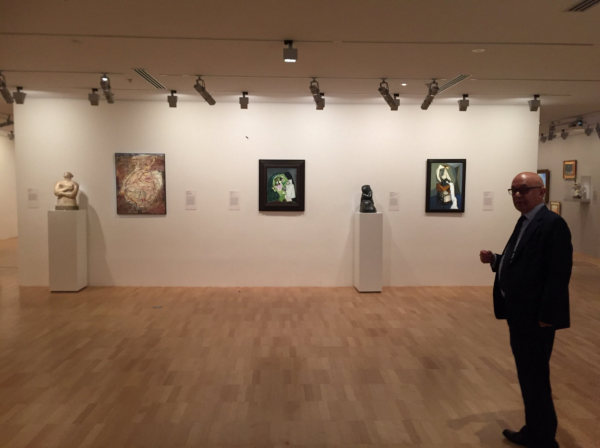
“This is where the frame was found … there used to be cupboards here, and the frame was found on top of the cupboard.” Peka tells me that on the Saturday when the painting went missing there had been a band from the art school rehearsing in the Great Hall.
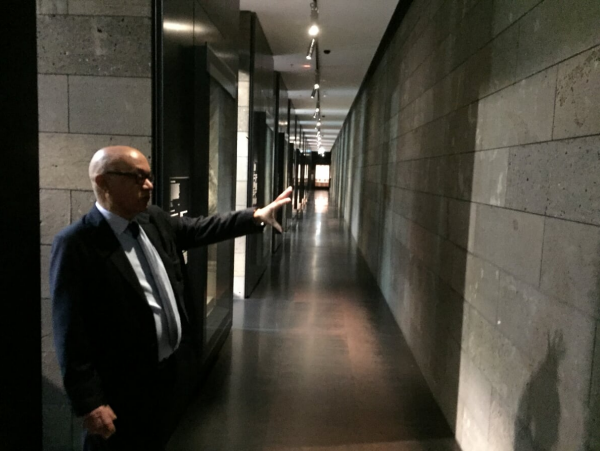
He walks to the balcony overlooking the hall. “All these musicians came with all their big cases” — it could have easily fit inside a case, “for example,” he adds.
We make our way back down to the ground floor and through the sculpture garden. “This was the art school,” he says, pointing to a conjoined building. “Students just said they were staff and could walk right through. At night-time it would be locked, and security would come and do the rounds.” But the art school kept their own hours, they did what they liked, “they had their own keys”.
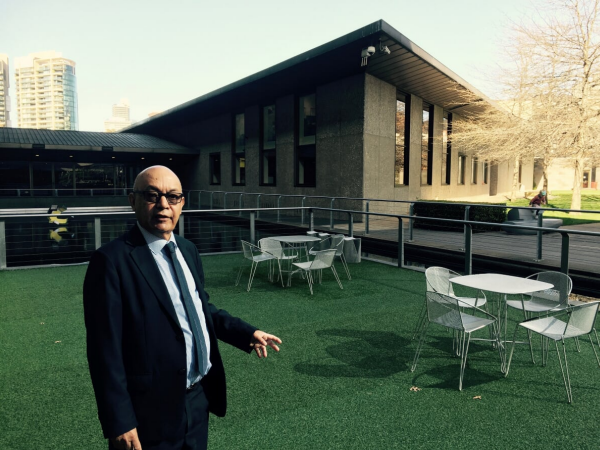
Peka says that before the Picasso went missing attendance at the gallery was very low — “after it was returned the attendance tripled and there was a lot of funding from the state government to upgrade security”.
One detail about the police investigation always has troubled Peka. “The police did not question any staff. That proves to you, that something …” he trails off. “What do you think that proves?” I ask.
Peka is choosing his words carefully. “My question is, did the management at the time stop it?’” he states softly.
I ask Peka what he thought of the rumours that NGV management was behind the theft.
“I don’t know, I just don’t know” Peka replies.
The Crikey journo
Stephen Feneley investigated the theft of the artwork for Crikey in 2006. “People were still being very evasive, and that was very hard for a bunch of people who otherwise don’t mind singing their own praises, particularly when they drink.” He recalled at the time “that there were a lot of people pointing their finger at the Roar group, but I never had any evidence it was them”.
“Based on conversations I had with people, without a lot of hard evidence, I had in my mind that it was these Roar artists,” Feneley tells me that his view then changed after he wrote the article in 2006 and put the call out to Crikey readers to come forward with information.
He tells me that the strongest lead he got was a letter that arrived in his personal PO box, “and it was a woman in the art world”. Feneley did not disclose the author’s name. But in the letter it had the name of a Melbourne academic and curator.
“He just seemed to be such an obvious guy to go from a semi-sort of ‘radical iconoclastic piss on the establishment’ to part of the establishment, over the course of his career.”
“And so it sort of made sense that it would be him. But I never pursued that story, and I went off to London after that and I never confronted him. I never felt I had enough concrete evidence to connect him to it or put the allegations to him.”
I type the professor’s name into my phone. A bombshell if true, but even if he was involved, he clearly hadn’t acted alone.
*Next up, part 2: A Picasso at Young & Jackson and a name on a napkin







Is this going anywhere or is it just another nostalgic walk around the block?
Oh Shane, don’t be such a stodgy old Boomer killjoy. I’m presuming you of all of us here understand the importance of narrative build, clues, red herrings, pacing…
Am loving it, Angus. Ignore the critics and write on…!
I was sitting in the State Library one day in the midst of this saga. Suddenly in marched
Patrick McCaughey with his trade mark bow tie and looking completely dishevelled.
I was radical, a roadie and going out with connected Melbourne Uni Arts student. I felt paranoid when he looked at me. I was merely reading, I think, Thus Spoke Zarathustra.
This story brings back vivid and beautiful memories.
The Australian Cultural Terrorists letter was featured on the sleeve for the 7 inch & 12 inch single releases of Painters and Dockers “Die Yuppie Die”. Which is nice.
http://flamingo.com.au/p/48803/painters-dockers-die-yuppie-die-pix-slv-pic-slv
My sister tells the story of the conversation she heard behind two ladies on the bus at the tim:
“Did you see that Picasso that got stolen?”
“yes”
“what do you think of it?”
“Not very much”
“You know, I don’t think the people who do CopperArt get the recognition they deserve.”
Looking forward to part 2.